Josh Ellick
Product Manager & Consultant
I’m a passionate Product and Innovation Consultant specialising in AI and immersive technology. I design, deliver, and scale digital products that turn complex ideas into measurable outcomes across learning, strategy, and organisational performance.


Vulnerability
Overview
The Problem: The business had a low recorded number of vulnerable clients compared to national statistics, highlighting the issue that some of our clients could be vulnerable, not adequately supported, and therefore at risk of avoidable harm. This was alongside Increased regulatory oversight from the FCA on ensuring good client outcomes (consumer duty) with a focus on vulnerability.My role: Lead on Product Management of the solution (0-1) and on delivery, adoption, and scaling within the business.
The BriefOver 40% of adults in the UK are experiencing at least 1 driver of vulnerability; including health, life events, financial resilience and capability. In SJP, 15% of our clients had a recorded vulnerability - a significant gap. My mission was to deliver a training solution to over 9,000 financial advisers to increase our percentage of recorded vulnerable clients, leading to improved support and client outcomes
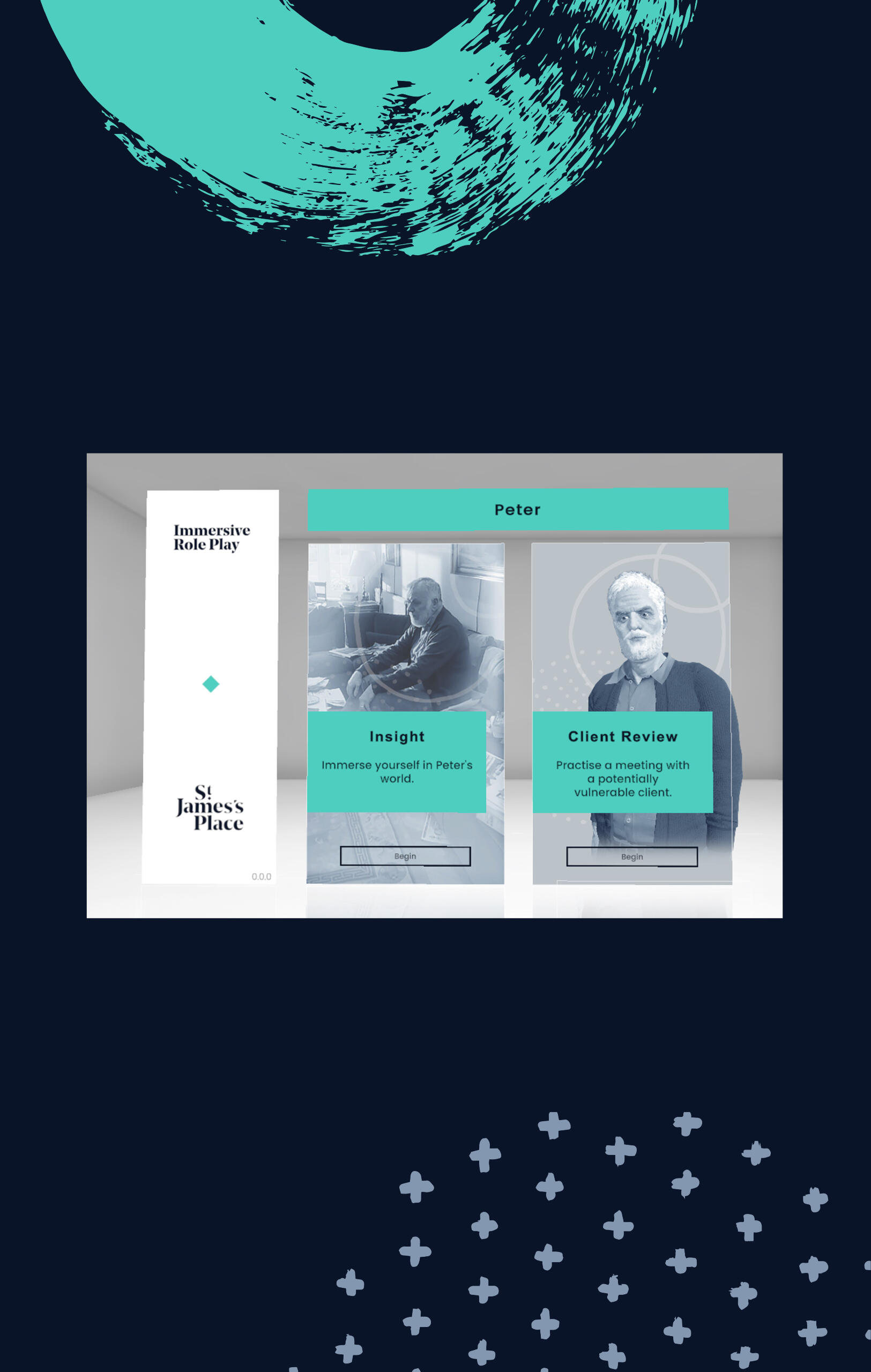
Vulnerability
Discovery + Design
For designing the training solution, two key needs emerged:Awareness - build empathy, emotional Intelligence & understanding of impact of vulnerability on individuals and their loved ones.Ability - equip with the skills and confidence to support those vulnerable clients.To cover these two needs, we settled on the 2-part training solution - a 360 film, and an interactive role play. This structure also aligned with a key lesson learnt from VR training delivery, a need for a simple, less overwhelming initial touch point, which a VR film could deliver. It also played to the strength of VR, the emotional connection users exhibit for the content.Next, I mapped out the scenario with SME's in our project team - deciding on the story we wanted to tell, and how would we link this to the learning objectives of the training.
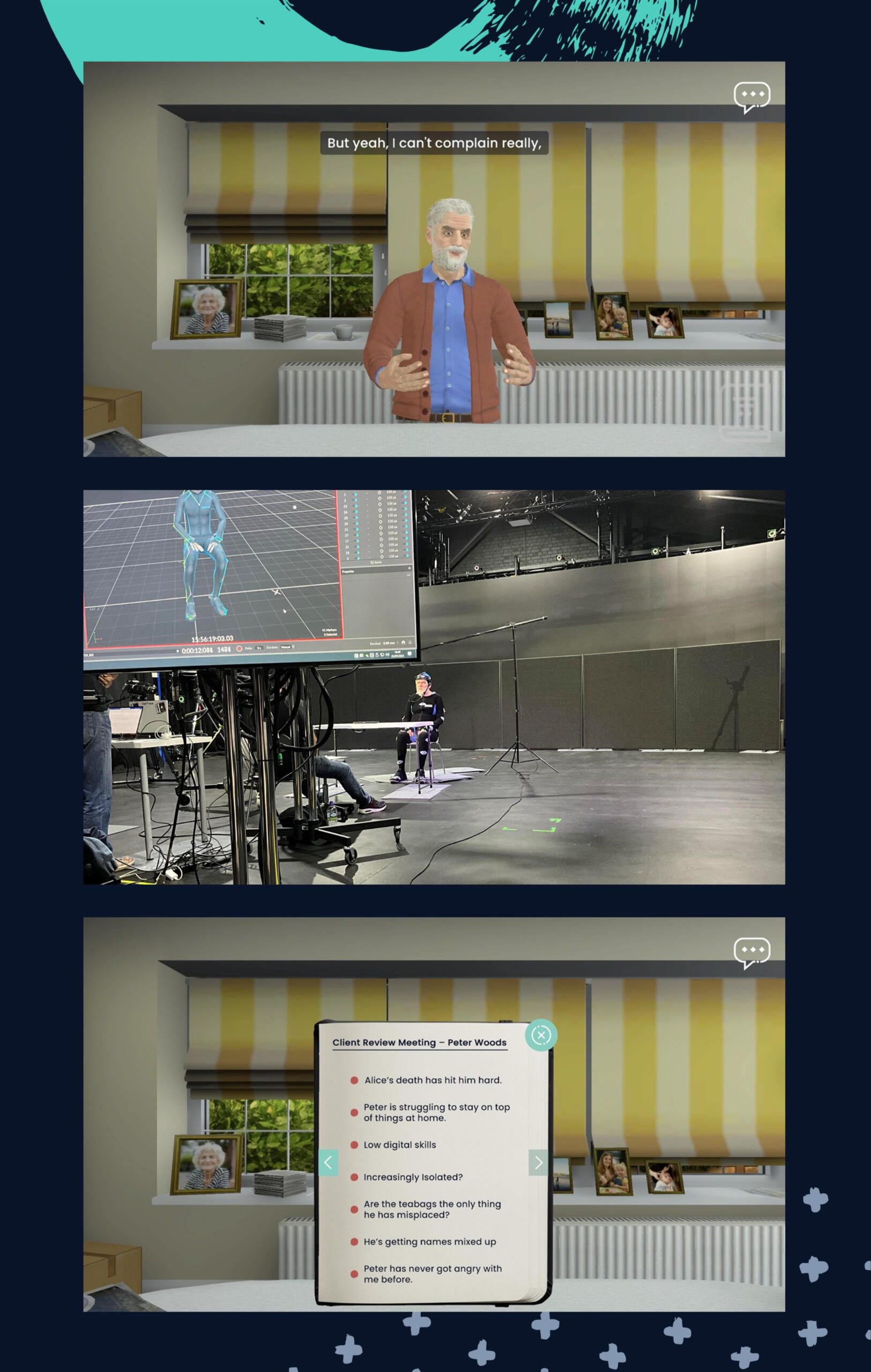
Vulnerability
Filming + Development
I engaged with three external suppliers on the development of the 360 film and VR role play. There was a lot of expertise required in film directing, producing, and games development. I led the project team from the business side, engaging with all suppliers on requirements, budget, and timescales.There was a lot of moving parts I oversaw: Storyboarding, Scripting, Screenplay, Filming, Design, Development (VR, Desktop & Mobile), Content Writing, and more. It required regular meetings with internal and external stakeholders, balancing the need for focus on non-negotiables with a flexile, agile approach.This was a really exciting phase of the project, with a number of firsts for us in the business, including a motion-capture performance with actors to feed into character animations in the role play - creating a more engaging experience.
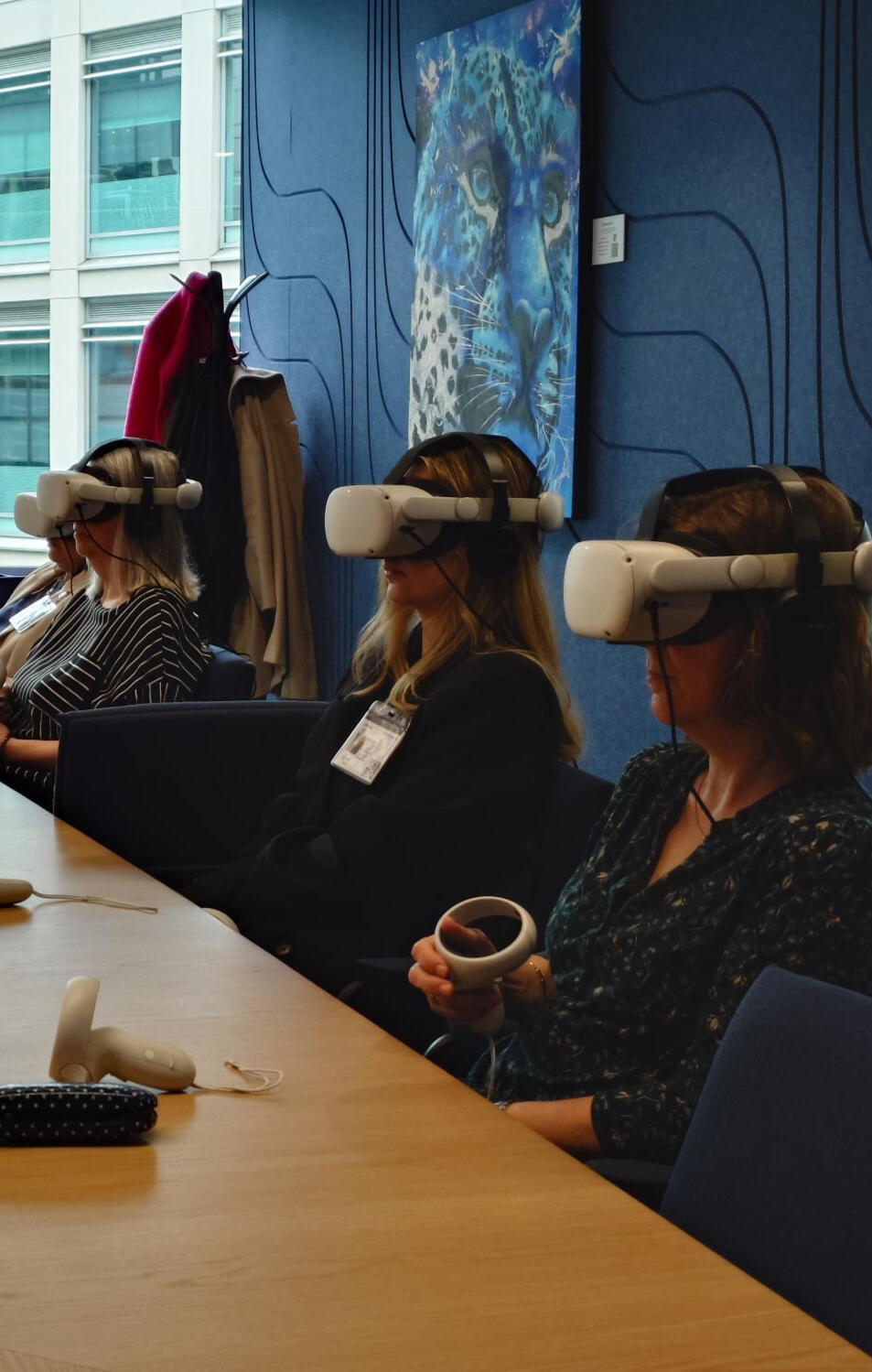
Vulnerability
Delivery, Review, Scale
After 6 months of development, we were almost ready to deliver. I ran user research focus groups with a beta build of the app for us to make final revisions and also to feed into our delivery approach. I worked with SME's to create a promotion plan and engage with a number of partner practices to be involved in the first phase of delivery.In this initial pilot, we had some incredible results. The training received a 100% NPS score, with one adviser saying it was "the best training I've done in 25 years". The pilot delivered a 19% increase in number of vulnerable clients on record - this meant more clients being correctly identified and connected with relevant support, delivering on our business objectives.This is now being scaled out through training programmes and workshops across SJP's financial adviser population.
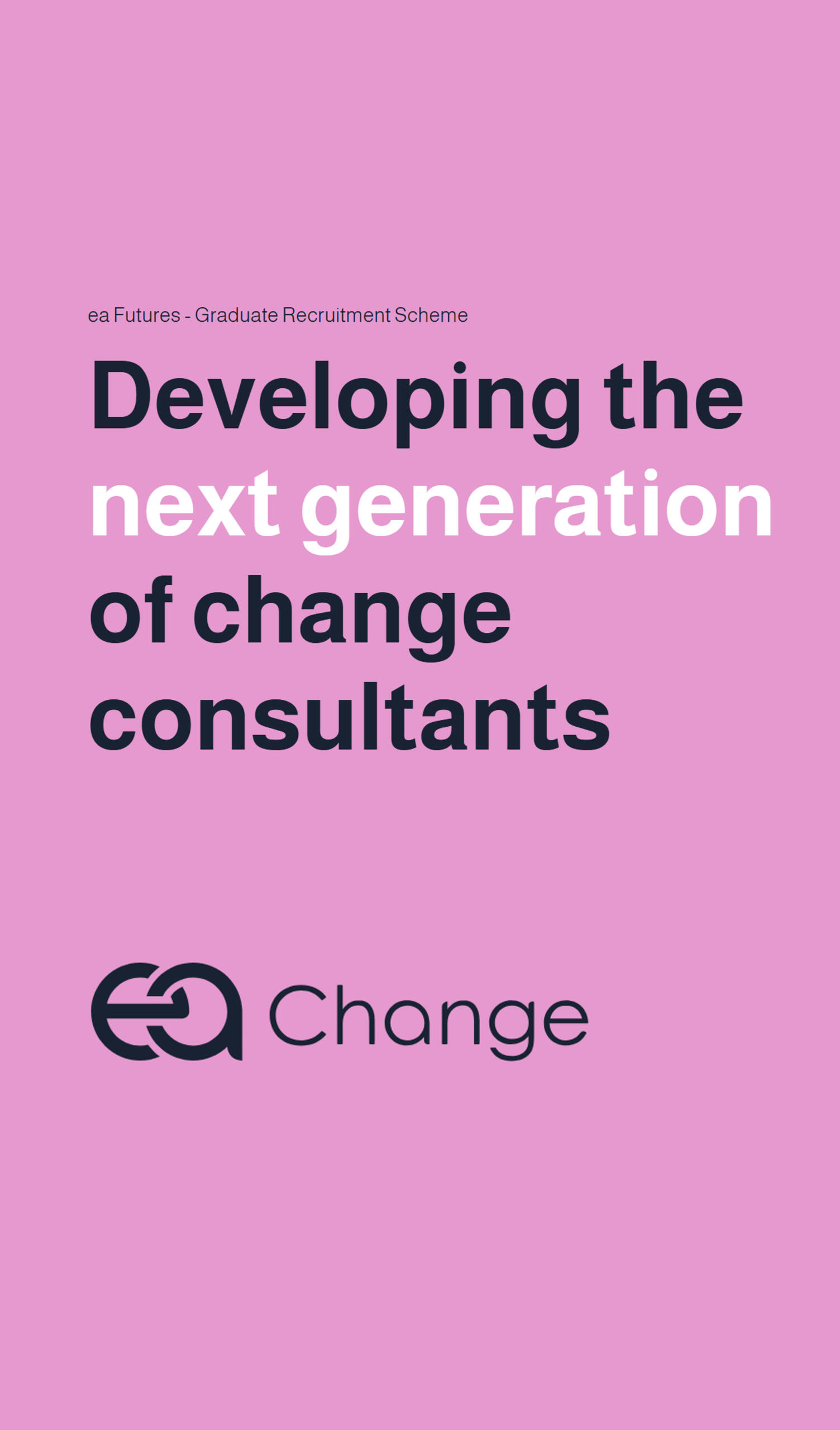
Graduate Recruitment
Overview
Design and implement a service that enables ea Change to provide B2B clients with high-quality graduates, whilst also delivering excellent training and experience for graduates to propel their careers in Business Change.The Problem: Companies were after cost effective and long term talent solutions for change projects that avoided challenges and blockers in HR recruitment and onboarding.My role: Client and Graduate User Research, Lead on service design, develop graduate service, design and write content, marketing, and sales material.
The ConceptEmploy graduates and offer them experience in Buisness Change by deploying them client-side as 'Project Analysts'. This would give clients access to talented, ambitious talent whilst offering the graduates excellent experience in business change. Graduates would receive constant support, training, and certifications throughout their deployment.
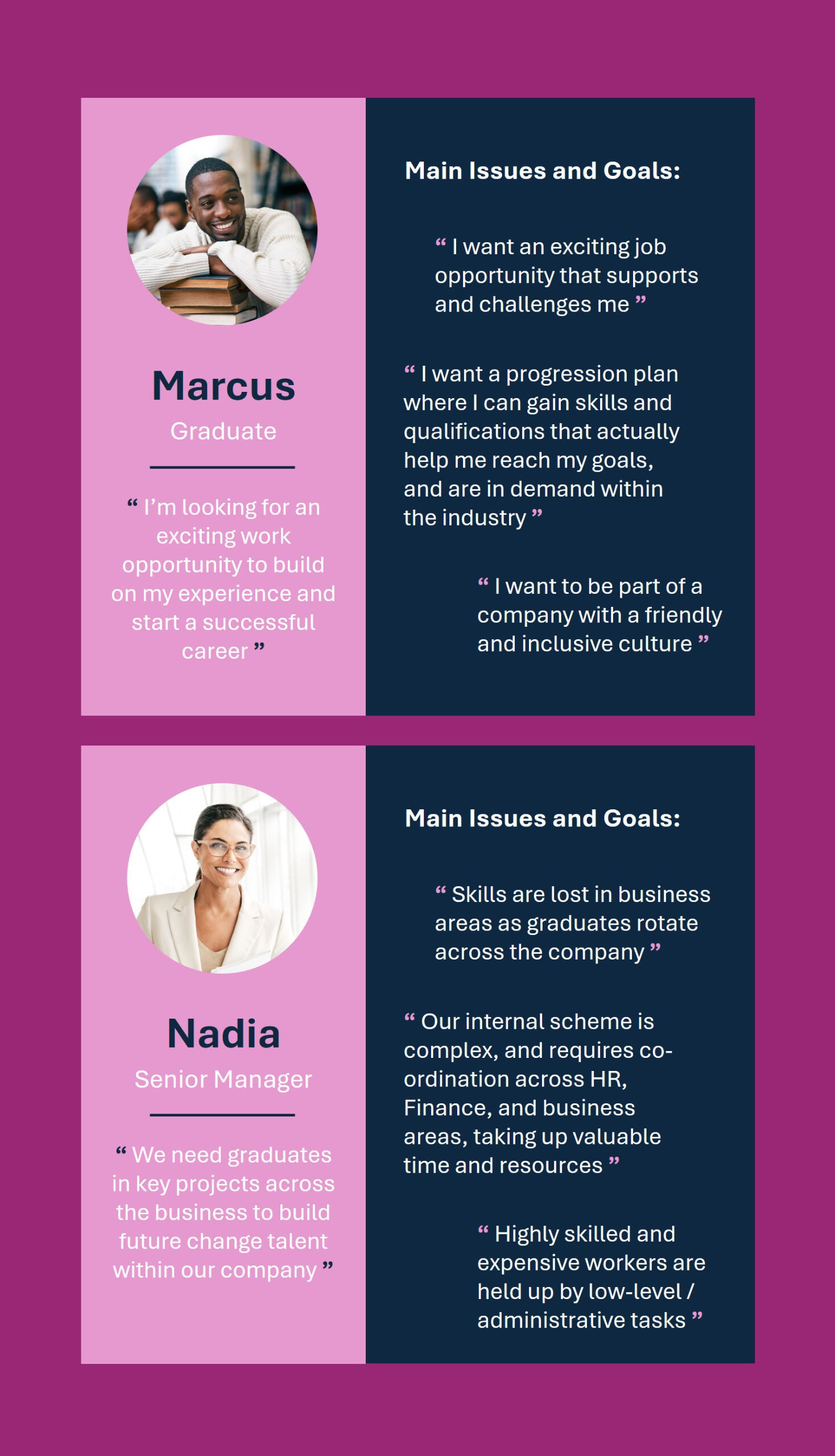
Graduate Recruitment
Client & Graduate User Research
The primary user groups were graduates after exciting workplace opportunities, and clients looking to develop their long-term business change capability.For the service to be a success, we needed to ensure we met the expectations of both graduates and B2B clients, whilst solving each of their unique challenges, alongside analysing competition to help us develop a unique proposition.This helped us focus our offering - eaFutures wouldn't attempt to be a replacement for in-house graduate programmes, but rather a supplement. Internal schemes typically put graduates in rotation across operational areas, we would deploy them on clients' business change projects.I conducted user research with the two groups to draw out the key goals and issues - framing these priorities in the service design.
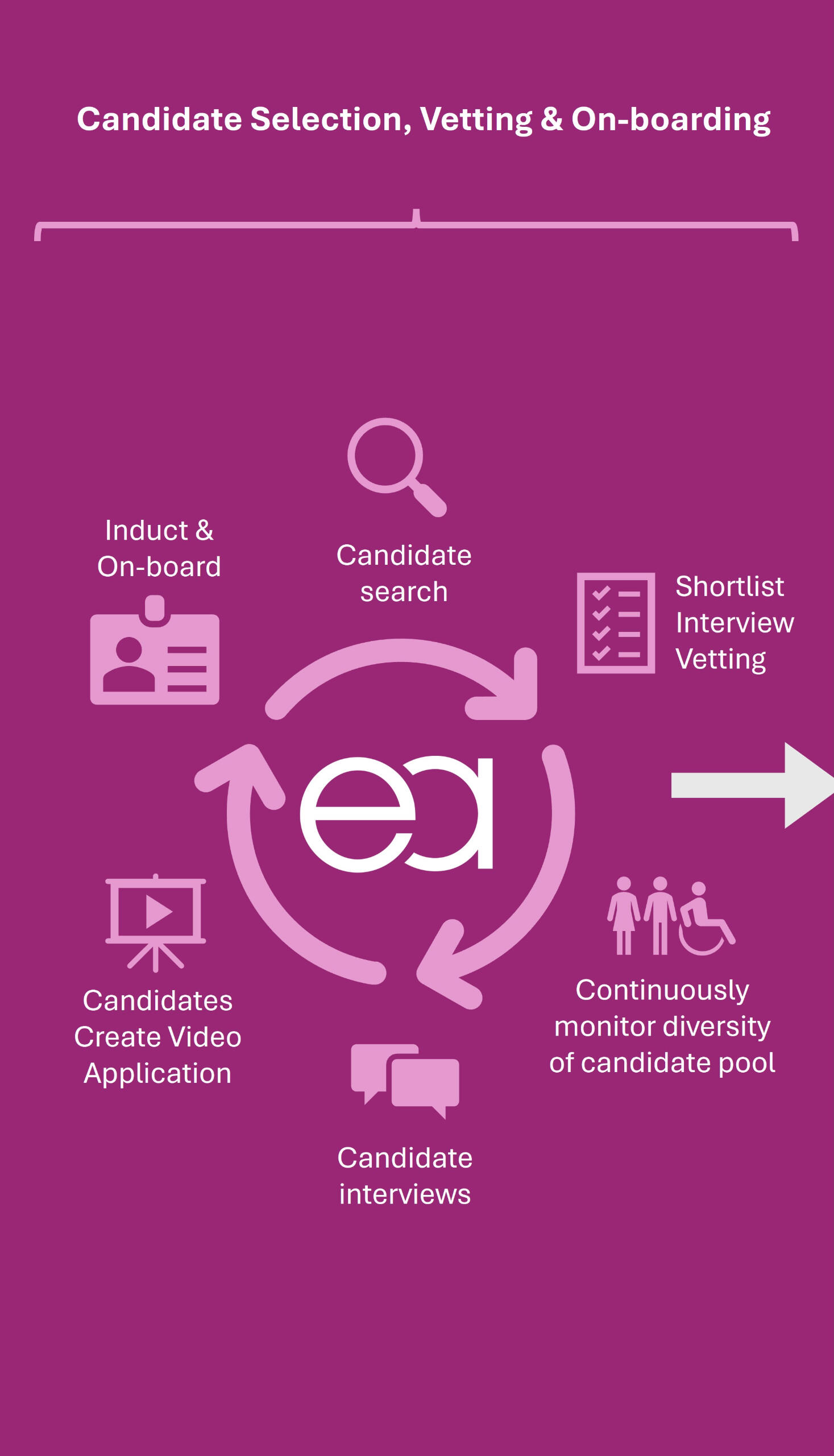
Graduate Recruitment
Service Design
My next task was to design a high-level service model outlining the key features, processes, and dependencies within the service. I worked with ea's co-owners to agree on the first iteration (MVP) - we collectively engaged with our clients, revealing clear, high-value needs:1 - Being able to assess graduates' communication and soft skills as early as possible in the process.2 - Structured and bespoke training that complements the needs of the change project / programme.To give clients confidence, we focussed on quality of the delivery - including a robust process for identifying, vetting, and onboarding candidates. This would also require us to build a candidate pool, as challenging time pressures of business change activities would require rapid deployment of graduates.
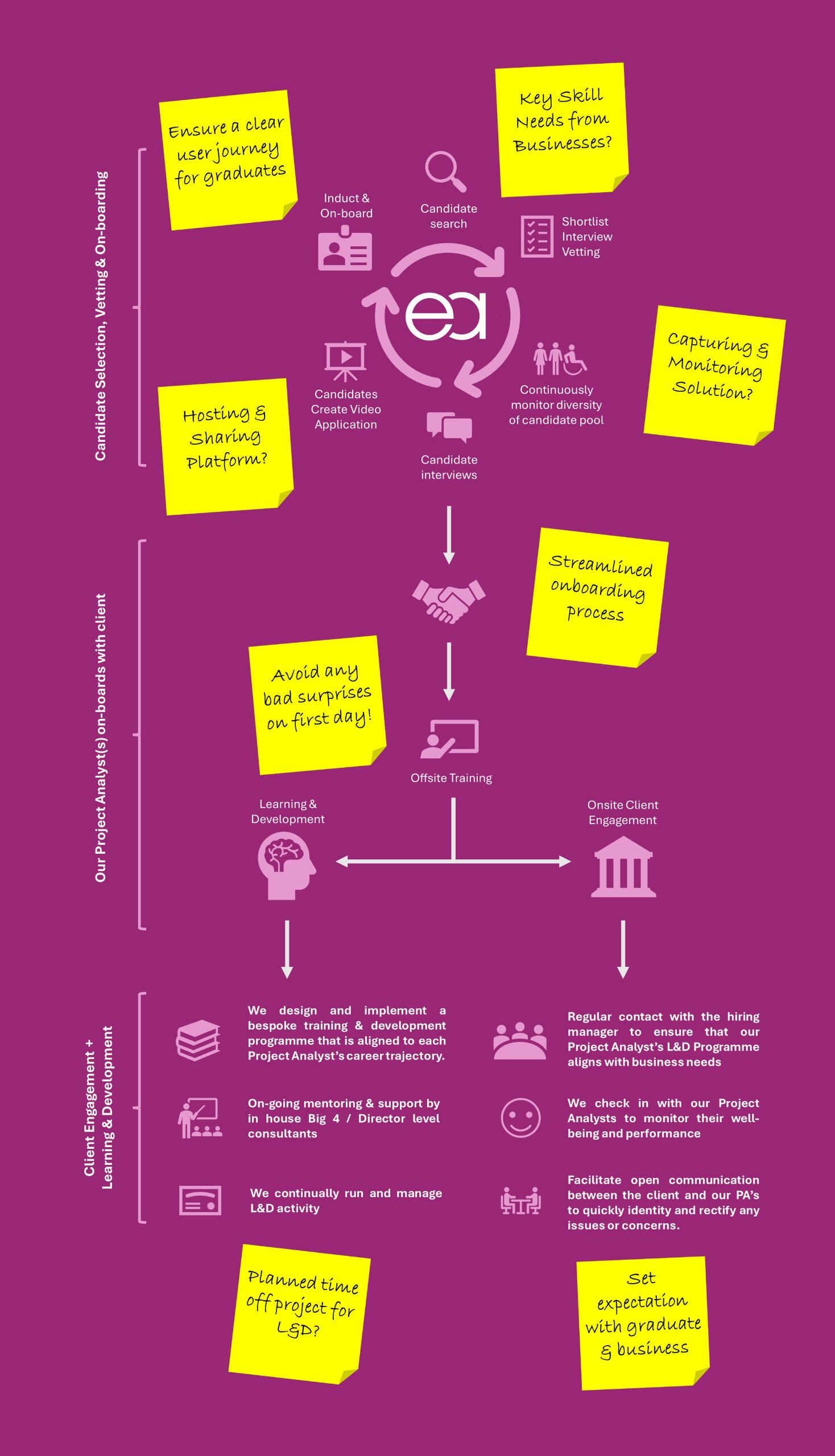
Graduate Recruitment
Procure, Build, Implement
Once service design was signed-off, I focussed on requirements for the first stage of the service - the candidate sourcing, vetting, and interviewing. Key questions included "how should we monitor and report on the diversity of the candidate pool?" and "what's the mechanism and journey for recording, storing and sharing video applications?"I researched options, and led procurement of Vimeo as a platform for securely storing and sharing video applications. I designed and wrote content to guide graduates through the application and video recording process, including building a form to anonymously capture diversity data.Once signed off, I then led the training of our internal teams on the new service, processes to follow, and spearheaded the team as we kicked off the service to continually review and iterate on the delivery.The initial delivery was a success, securing over 10 graduate deployments in the first year (over £600k net revenue)
AI Development
Research & Ideation
This work centred around mission statements I created to drive our L&D strategy in line with business objectives. Working with users across the business, a fundamental learner need that broadly resonated was "Effective, easily accessible training that respects my time."I saw an opportunity with AI, and so I led research into emerging AI role-play technologies - defining the core task: create an AI learning capability that could prototype, test, and deploy AI simulations safely and effectively within a highly regulated environment.For users, the goal was to offer faster skills development, measurable uplift in performance, and a pathway for rapid, personalised learning at scale.

AI Development
Consultation & Design
I next started a high-level design for an end-to-end AI development lifecycle that allowed us to experiment responsibly, while meeting defined standards around quality, compliance, and security.I built a working relationship with AI and Risk stakeholders, sharing our proposal. This revealed needs around QC criteria, transparency guidelines, and rules around data handling. In parallel, I collaborated with L&D teams to ensure our capability to deliver, and also to consider how it would embed into our current learning capabilities.This collaboration led to a comprehensive project lifecycle, supported by agile ways of working, sprint planning, backlog refinement, and iterative reviews. The next task was to put it to the test, focussing on striking the right balance between innovation and governance.
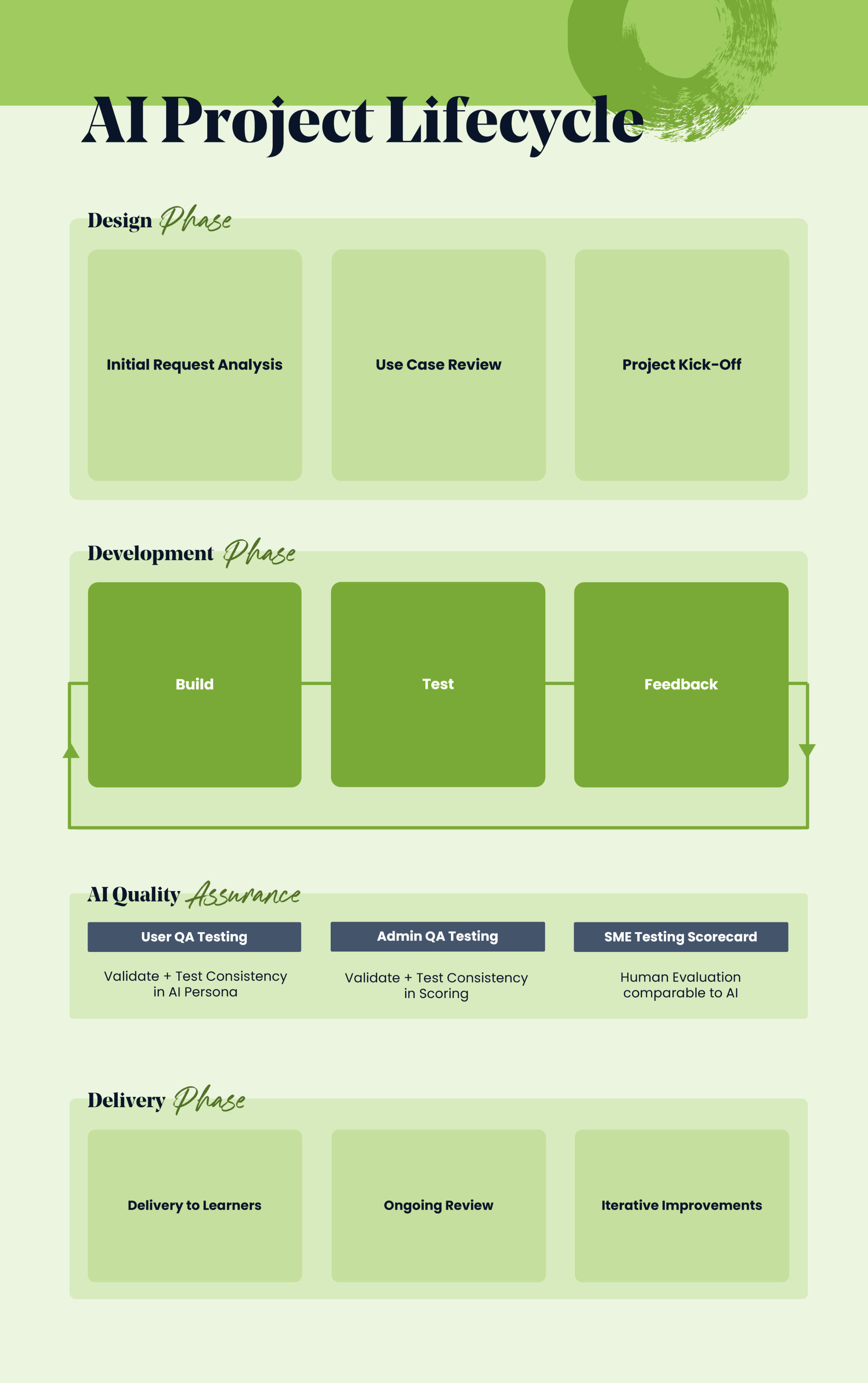
AI Development
Pilot Case Studies
I led two pilots: 'Giving Feedback' and 'Neurodiversity'. These projects tested whether AI-powered simulations could offer contextual training, evaluate performance, and provide personalised coaching.The results provided strong evidence of ROI. Both pilots delivered an average 42% uplift in learner performance. The simulations delivered these performance gains in under 10 minutes of training time - a 5x efficiency gain compared to legacy training. Thanks to rich insights gathered from post-evaluation data, we designed tailored learning journeys for individuals and teams on development areas, this allowed for precision, low footprint, high impact interventions. The bespoke, lean agile development approach also enabled delivery in 6 weeks, instead of 3-6 months.Together, these pilots validated the business case, proving both the learner impact and the commercial value of embedding AI into the learning ecosystem.

AI Development
Integration & Scaling
My focus shifted to demonstrating - through success of the pilots - the strategic, business, and learner benefits for wider adoption.I showcased this new product offering with senior stakeholders across the business, including key areas such as AI, Adviser Support, and Client Liaison. My focus was on having a robust, articulate message around how we're solving a key business challenge.Meanwhile, I led integration of our AI learning into existing programmes and the SJP House digital learning environment, to provide a more seamless user journey across our portfolio.By clearly demonstrating the benefits, I have since initiated multiple new AI projects targeting high-priority capability gaps, delivering tactical, just-in-time learning, that could go from proposition to launch in weeks.This firmly established AI learning as an innovative, scalable, and valuable proposition across the organisation.
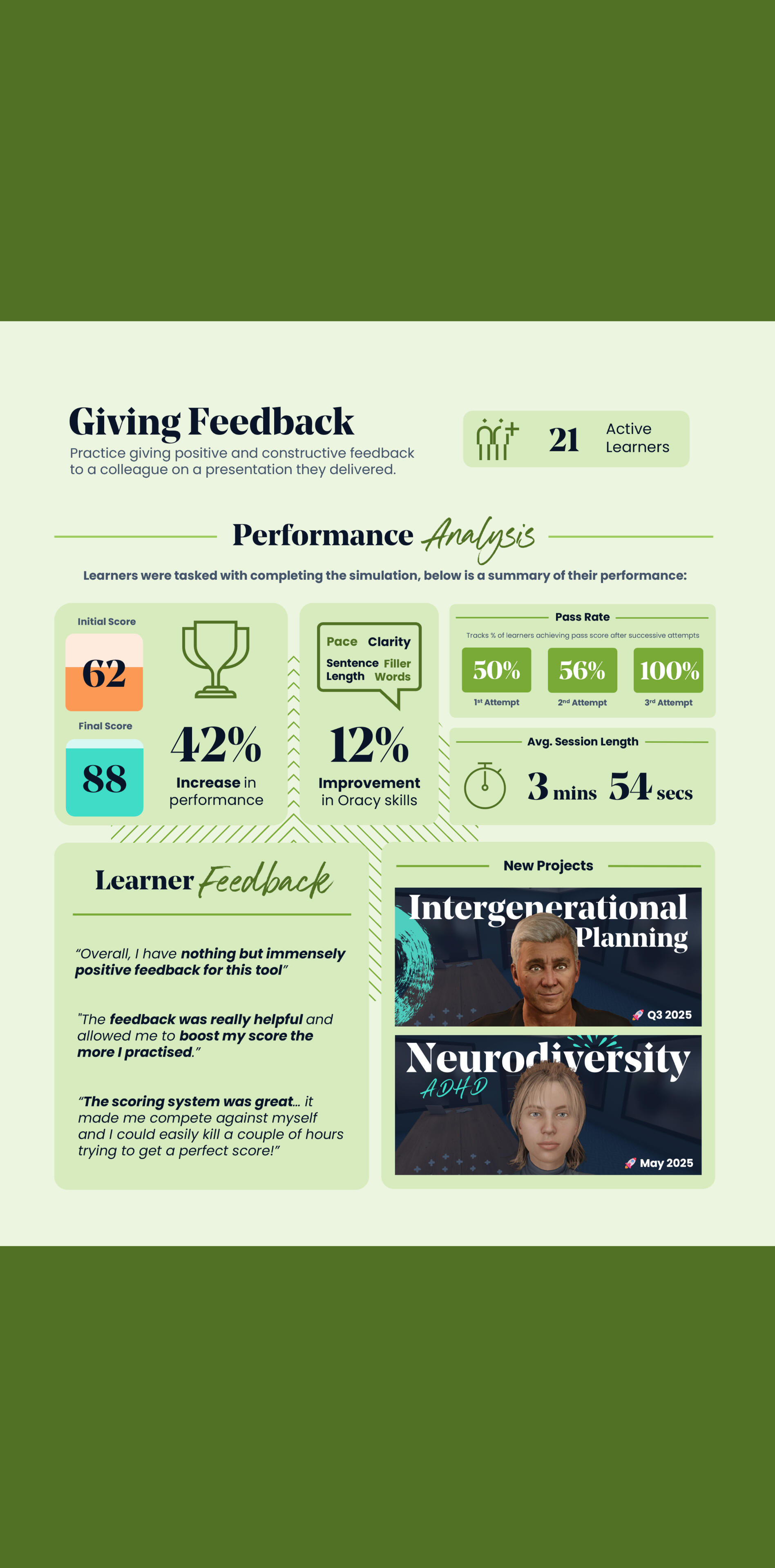
VR Academy Programme
Overview
The Problem: SJP runs an academy Programme that trains and delivers their future advisory talent. COVID-19 accelerated a transition to more remote learning, which typically involved peer-to-peer roleplays to practice having clients conversations. There were concerns that running these traditional roleplays remotely wouldn't cut it and would negatively impact the performance of advisers developed through the academy programme.My role: Lead on management of a new VR training product, including ownership of design, development, and delivery. Leading on adoption and embedding within the academy programme.
The BriefDeliver VR training to delegates in our academy programme, where trainee financial advisers will practice initial client conversations and develop the essential soft skills and confidence to run effective client meetings.
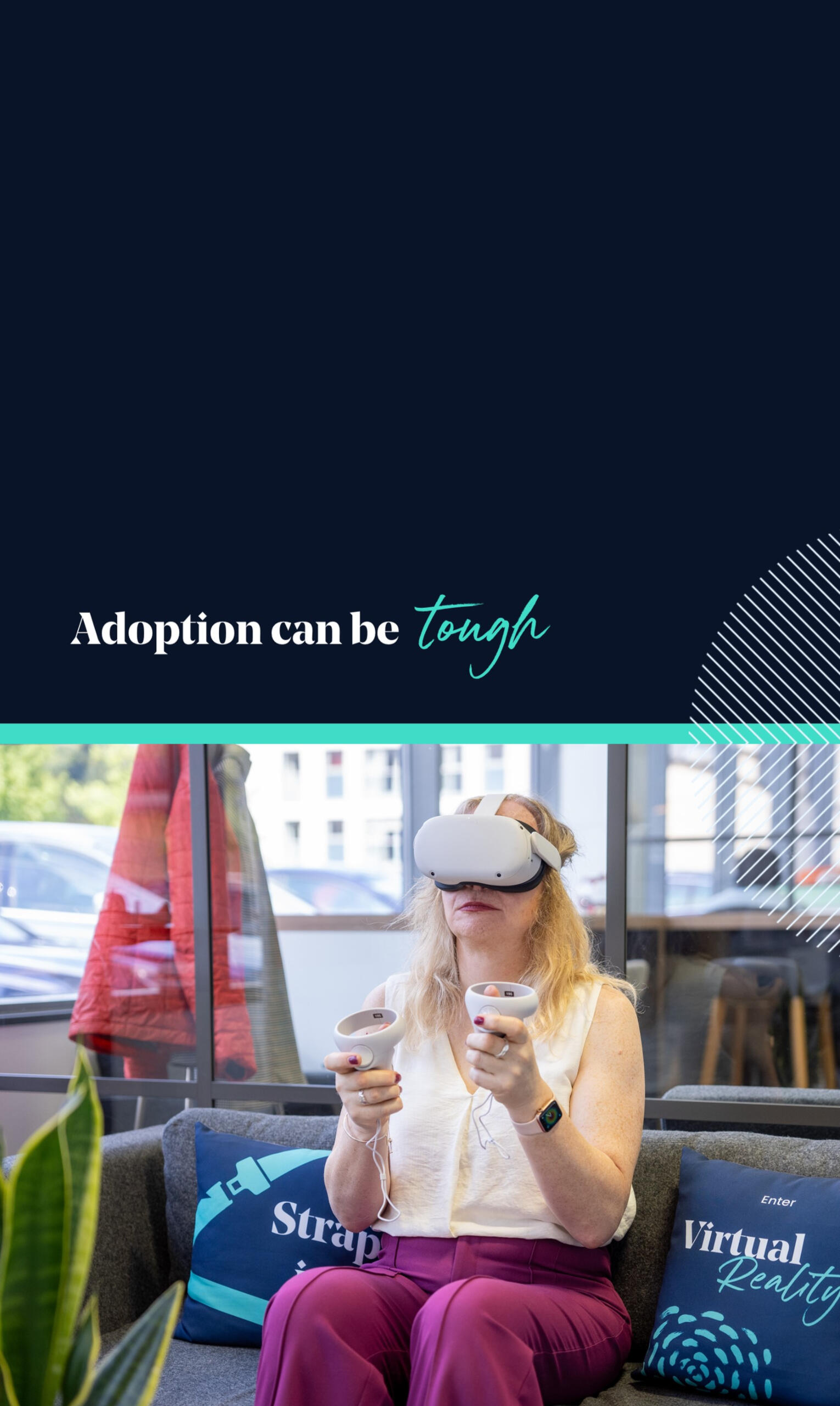
VR Academy Programme
Design Development
I met with stakeholders and SMEs to agree on training needs:Soft Skills - Test and assess ability on asking open questions, building rapport, active listening, and commercial awareness.Confidence - Scenarios that are realistic and challenging, with clear and actionable feedback that leads to better performance and outcomes in subsequent playthroughs.Emotional Intelligence & Awareness - Develop a deeper understanding of client needs, reflecting that undrestanding through empathetic, supportive actions in client meetings.We then brainstormed features with our development partner to support delivery of our training needs.Branching Scenarios - Learner actions to have positive and negative consequences. Controlled narrative, non-AI, and tied to measurable skills.Spotlight - Opportunities to listen to client's thoughts. Supports learners in developing emotional intelligence & understanding their client's perspective.Observations - Clues in the environment (client's home) that can be brought into the conversation, unlocking branching options that are clearly highlighted to the learner.
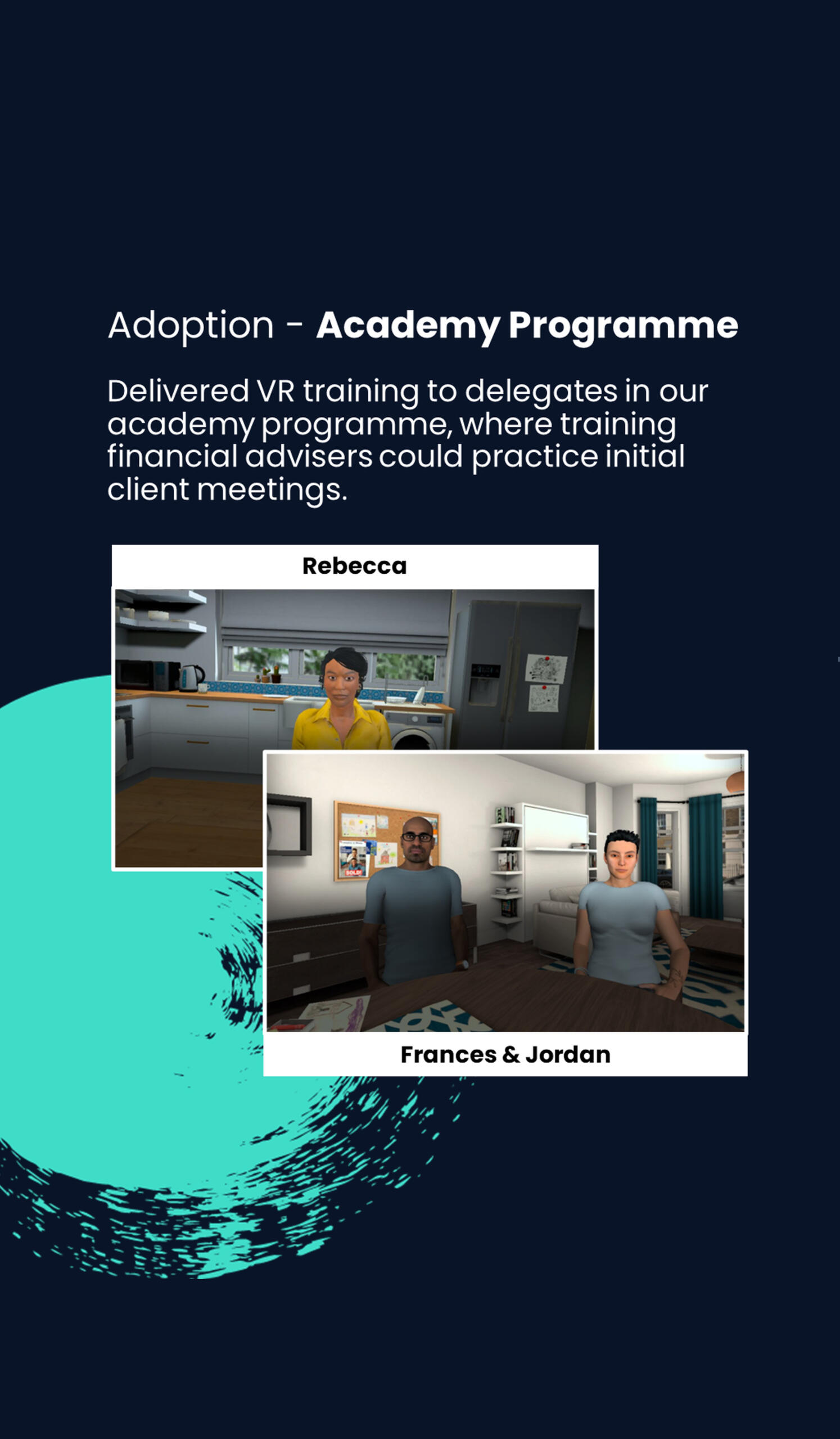
VR Academy Programme
Delivery
We worked closely with stakeholders in the Academy on a launch plan, which included a process for getting all academy delegates (500 annually) set up with a VR headset for 12 weeks.I managed logistics, comms and development of learning material to facilitate delivery and support delegates in using the headsets and training content. I also created reporting through PowerBI to track engagement and impact across cohorts in the academy programme.The roleplays were designed to track essential soft skills; including active listening, building rapport, and commercial awareness. In terms of impact, the results were impressive - delegates were encouraged to do multiple playthroughs, and delivered a 73% improvement in performance.But we had another challenge to overcome - adoption.
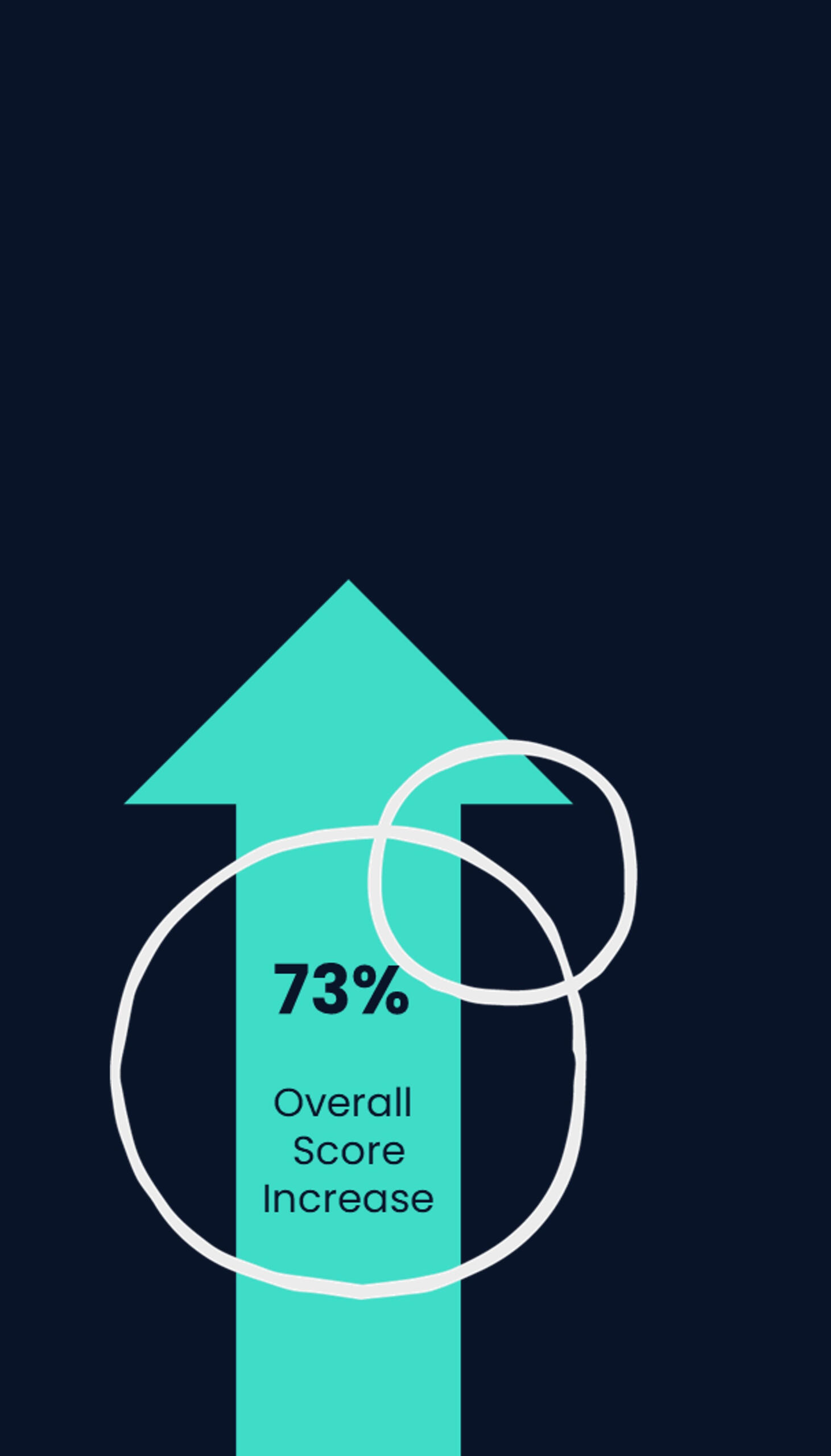
VR Academy Programme
Adoption
We created the content and delivered it to the academy, but they were ultimately managing the agenda and were responsible for positioning it with delegates. There were a few key challenges ; The delegate training agenda was already rammed with content, delegates were struggling with using the headsets, and the academy trainers themselves not feeling confident in supporting delegates with VRI put a project group together, including Academy stakeholders to work through these challenges, we moved forward with a few solutions, including specific touch points in the agenda for VR training, introduce VR ‘onboarding workshops’ with delegates at the start of their programme, and offering more drop-ins and material to empower trainers to better support delegates.We improved adoption from 41% (2022) to 71% (Q4 2023) with some cohorts reaching over 90%. By the end of 2024, we reached 1100 playthroughs across over 400 delegates.

Contact
Have something you want to ask? Say it down below!
Thank you
Message received - I'll get back to you as soon as I'm able!